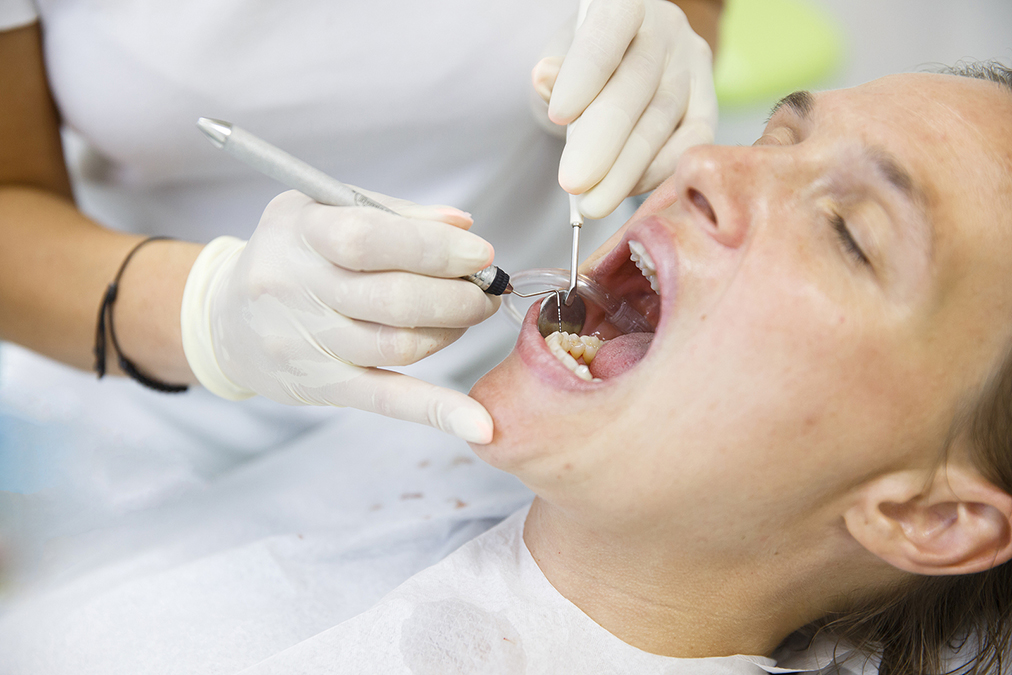 Gum disease has long been blamed on poor teeth cleaning, smoking, and other hygienic factors.
Gum disease has long been blamed on poor teeth cleaning, smoking, and other hygienic factors.
A new study in the latest edition of the journal Scientific Reports reveals that it’s actually one type of food that should take the biggest blame.
If you cut down on this food, you may completely reverse your gum disease in days.
The oral bacterium that gives rise to gum disease appears mostly in the subgingival plaque, not on our teeth or in our saliva. The subgingival plaques are the plaques present under our gums.
Oddly, however, most studies collect bacteria from our saliva or teeth when they investigate gum disease.
A team from the University at Buffalo decided to do it the right way and examine the subgingival plaque in relation to the food people ate. They were especially interested in different types of carbohydrates as these require bacteria to break them down.
They used data already collected by the Buffalo Osteoporosis and Periodontal Disease (OsteoPerio) Study, involving 1,204 postmenopausal women.
The original purpose of the OsteoPerio study was to examine bone loss in the mouths of women with osteoporosis but, to control for potential influencing factors, it also collected dietary information in the form of a food frequency questionnaire on which participants had to report their typical food intake over the past three months.
That’s why its data were so good to use for this new study.
Regarding carbohydrate intake, they found that the most overall carbs were consumed by people with low rather than with high body mass index, by people who had never smoked, and by women with a post-college education.
The sucrose, fructose, and glucose, considered the unhealthiest types in large amounts, were mostly consumed by older instead of younger women, women with low rather than high body mass index, and African Americans.
With regard to bacteria, they made the following discoveries.
-
1. The women who ate the most carbs and the most high glycemic load (GL) carbs had the smallest variety of bacteria in their mouths, which is usually a bad thing because we need healthy bacteria to combat the unhealthy bacteria.
2. Those who ate the most overall carbs including the most high-GL carbs had the most Streptococcus species in their mouths. These species contribute to tooth decay and heart disease.
3. High carb intake promoted the presence of Leptotrichia spp, a species associated with gum disease.
4. High GL carb intake promoted bacteria such as Sphingomonas HOT 006 and Scardovia wiggsiae that had not been previously linked to gum disease.
These findings demonstrate why we should reduce the amount of carbs we eat, or at least increase our intake of fiber relative to the amount of high GL carbs in our diets if we want to prevent gum disease.

 Overcoming IBD
Overcoming IBD Multiple Sclerosis
Multiple Sclerosis Banishing Bronchitis
Banishing Bronchitis Gum Disease Gone
Gum Disease Gone Overcoming Onychomycosis
Overcoming Onychomycosis Neuropathy No More
Neuropathy No More The Prostate Protocol
The Prostate Protocol Brain Booster
Brain Booster
 Ironbound
Ironbound
 Solution for Shingles
Solution for Shingles
 The Bone Density Solution
The Bone Density Solution
 The Ultimate Healing Protocol
The Ultimate Healing Protocol
 The Parkinson's Protocol
The Parkinson's Protocol
 The Chronic Kidney Disease Solution
The Chronic Kidney Disease Solution
 Overthrowing Anxiety
Overthrowing Anxiety The Fatty Liver Solution
The Fatty Liver Solution The Hypothyroidism Solution
The Hypothyroidism Solution
 The End of Gout
The End of Gout The Blood Pressure Program
The Blood Pressure Program
 The Oxigized Cholesterol Strategy
The Oxigized Cholesterol Strategy
 Stop Snoring And Sleep Apnea Program
Stop Snoring And Sleep Apnea Program
 The Arthritis Strategy
The Arthritis Strategy The Vertigo & Dizziness Program
The Vertigo & Dizziness Program The 3-Step Diabetes Strategy
The 3-Step Diabetes Strategy Hemorrhoids Healing Protocol
Hemorrhoids Healing Protocol The Erectile Dysfunction Master
The Erectile Dysfunction Master Weight Loss Breeze
Weight Loss Breeze The IBS Program
The IBS Program The Insomnia Program
The Insomnia Program The Migraine and Headache Program
The Migraine and Headache Program The Neck Pain Solution
The Neck Pain Solution The Menopause Solution
The Menopause Solution The Ejaculation Master
The Ejaculation Master The TMJ Solution
The TMJ Solution The Acid Reflux Solution
The Acid Reflux Solution The Fibromyalgia Solution
The Fibromyalgia Solution The Psoriasis Strategy
The Psoriasis Strategy